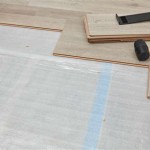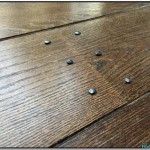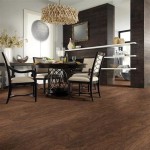What Type of Wood Flooring Is Best For Pets?
Selecting the right wood flooring for a home with pets requires careful consideration. Pet ownership introduces several factors that can impact the longevity and appearance of wood floors. These factors include scratches from claws, accidents that lead to staining, and the potential for increased wear and tear. Choosing a flooring option that balances aesthetic appeal, durability, and ease of maintenance is essential for pet owners.
The ideal wood flooring for homes with pets should be resistant to scratches and dents, offer moisture resistance to mitigate accidents, and be relatively easy to clean. Certain wood species, finishes, and installation methods are better suited for withstanding the challenges presented by pets. Understanding the characteristics of various wood flooring options is crucial for making an informed decision.
Hardness and Durability
The Janka hardness scale is a widely used measure of a wood's resistance to denting and wear. This scale measures the force required to embed a steel ball of a specific size halfway into the wood. A higher Janka rating indicates a harder wood that is more resistant to scratches and dents. For homes with pets, selecting woods with high Janka ratings is recommended.
Brazilian Cherry (Jatoba) is a popular choice due to its high Janka rating, typically around 2350. This makes it a very durable option that can withstand the daily wear and tear from pets. Other durable hardwoods include Hickory (around 1820), Maple (around 1450), and Oak (Red Oak around 1290, White Oak around 1360). These options provide a good balance of durability and affordability.
Softer woods, such as Pine and Fir, have significantly lower Janka ratings and are more susceptible to scratches and dents. While they may be aesthetically pleasing and more budget-friendly, they are generally not recommended for homes with active pets. The visible wear and tear will likely necessitate refinishing or replacement sooner than with harder wood options.
Engineered hardwood flooring can also be a suitable choice, even if the top veneer layer is a softer wood. The underlying layers of plywood or fiberboard provide stability and resistance to moisture, which can be beneficial in homes with pets prone to accidents. However, the thickness of the veneer is a crucial factor. A thicker veneer allows for more refinishing opportunities, extending the lifespan of the flooring.
Finish and Protection
The type of finish applied to wood flooring plays a significant role in its resistance to scratches, stains, and moisture. Polyurethane finishes are commonly used due to their durability and protective qualities. They form a hard, protective layer over the wood, shielding it from scratches and spills.
Water-based polyurethane finishes are generally preferred over oil-based finishes due to their lower volatile organic compound (VOC) emissions and faster drying times. They also tend to be clearer, allowing the natural beauty of the wood grain to shine through. However, oil-based polyurethanes are typically more durable and offer better water resistance, which could be a consideration for homes with pets prone to accidents.
Aluminum oxide finishes are exceptionally durable and scratch-resistant. These finishes are often used on prefinished wood flooring and provide a long-lasting protective layer. While they are highly resistant to scratches, they can be difficult to repair if damaged. Refinishing aluminum oxide finished floors typically requires specialized equipment and expertise.
Penetrating oil finishes, such as tung oil or linseed oil, penetrate the wood fibers rather than forming a surface coating. While they offer a natural look and feel, they provide less protection against scratches and moisture compared to polyurethane finishes. These finishes require more frequent maintenance and are generally not recommended for homes with pets.
Regardless of the finish chosen, applying multiple coats is essential for providing adequate protection. This creates a thicker barrier against scratches, stains, and moisture, extending the life of the flooring. Regular maintenance, such as sweeping and mopping with appropriate cleaning products, is also crucial for preserving the finish and maintaining the appearance of the flooring.
Installation and Maintenance
The installation method of wood flooring can also impact its performance in homes with pets. Solid hardwood flooring is typically nailed or glued down to the subfloor. This provides a stable and durable surface, but it can be susceptible to moisture damage if spills are not cleaned up promptly.
Engineered hardwood flooring can be installed using various methods, including nailing, gluing, or floating. Floating floors are not directly attached to the subfloor and can expand and contract with changes in humidity. This can be advantageous in areas with fluctuating humidity levels, but it may also result in more movement and noise compared to nailed or glued-down floors.
Proper maintenance is crucial for extending the life of wood flooring in homes with pets. Regular sweeping or vacuuming removes dirt and debris that can scratch the finish. Promptly cleaning up spills and accidents prevents staining and moisture damage. Using appropriate cleaning products specifically designed for wood floors is essential for avoiding damage to the finish.
Area rugs and mats can provide additional protection in high-traffic areas and near doorways. These can help to reduce the amount of dirt and debris that is tracked onto the floors and prevent scratches from pet claws. Choose rugs and mats with non-slip backings to prevent them from sliding and causing accidents.
Regularly trimming pet nails can also help to minimize scratches on wood floors. This simple task can significantly reduce the wear and tear on the flooring and extend its lifespan. Consider using a nail grinder or clipper specifically designed for pets and consult with a veterinarian or groomer for guidance on proper nail trimming techniques.
Refinishing wood floors can restore their appearance and remove scratches and stains. The frequency of refinishing depends on the type of wood, the finish, and the level of wear and tear. Harder woods with durable finishes may only need to be refinished every 10-15 years, while softer woods with less durable finishes may require more frequent refinishing.
Screening and recoating is a less intensive process than refinishing that can refresh the appearance of wood floors without removing the existing finish. This involves lightly sanding the surface and applying a new coat of finish. Screening and recoating can be done more frequently than refinishing and can help to extend the life of the flooring.
Another maintenance strategy is to consider using protective floor coatings. These coatings, often applied professionally, can create a durable, transparent layer on top of the existing finish, providing enhanced protection against scratches, stains, and wear. They can be especially useful in high-traffic areas or for pet owners concerned about potential damage.

How To Choose The Best Flooring For Dogs Home Depot

How To Choose The Best Flooring For Dogs Home Depot

How To Choose The Best Flooring For Dogs Home Depot

Best Hardwood Floors For Pets Bargains Blog Www Hardwoodbargains Com

Pet Friendly Flooring Guide

How To Choose The Best Flooring For Dogs Home Depot

Best Flooring For Dogs Things To Keep In Mind Hardwood Bargains Blog Www Hardwoodbargains Com When Choosing New

The 10 Best Types Of Wood Flooring For Dogs Floorings
.png?strip=all)
What S The Best Dog Friendly Flooring America

How To Choose The Best Flooring For Dogs Home Depot
Related Posts








